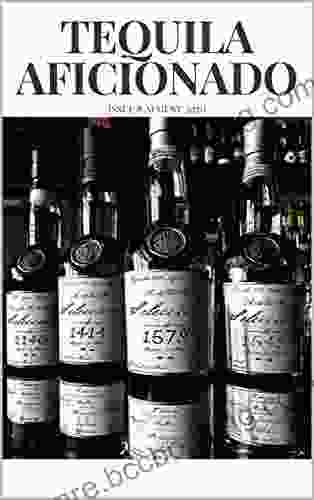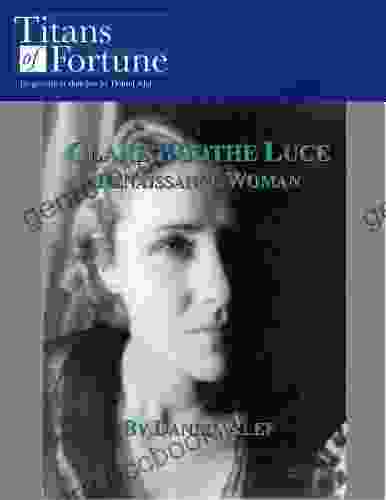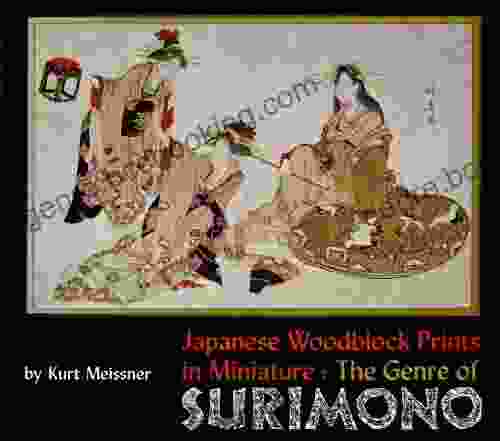Unveiling the Enchanting World of Surimono: An Exposé of Japanese Woodblock Print Beauty

Step into the captivating realm of surimono, a genre of Japanese woodblock prints that encapsulates the essence of elegance and sophistication. Surimono, meaning "printed thing," emerged in the mid-18th century as a specialized form of ukiyo-e, capturing scenes of everyday life and tradition. Unlike commercial ukiyo-e prints intended for mass distribution, surimono were privately commissioned and produced in limited quantities, catering to discerning collectors and connoisseurs. Immerse yourself in this article as we explore the unique characteristics, artistry, and cultural significance of surimono, revealing their enduring appeal and timeless beauty.
Distinctive Features of Surimono
Surimono are easily recognizable by their distinctive features that set them apart from other ukiyo-e prints.
5 out of 5
| Language | : | English |
| File size | : | 5820 KB |
| Text-to-Speech | : | Enabled |
| Screen Reader | : | Supported |
| Enhanced typesetting | : | Enabled |
| Print length | : | 109 pages |
- Elaborate Designs: Surimono are known for their intricate and refined designs, often featuring elaborate patterns, delicate brushwork, and meticulous attention to detail. These designs often depicted auspicious symbols, literary references, or seasonal motifs, reflecting the refined tastes of their patrons.
- Exceptional Paper: Surimono were printed on the finest quality paper available, such as hosho or torinoko, ensuring their durability and preserving their vibrant colors. This high-quality paper contributed to the prints' crisp lines, subtle gradations, and overall aesthetic appeal.
- Limited Editions: Unlike commercial ukiyo-e prints, surimono were produced in small, numbered editions, typically ranging from a few dozen to a few hundred copies. This exclusivity made surimono highly sought after by collectors, enhancing their value and desirability.
- Private Commissions: Surimono were typically commissioned by private individuals or groups for specific occasions, such as weddings, birthdays, or poetry gatherings. This gave surimono a personal and commemorative quality, often reflecting the interests and aspirations of their patrons.
The Art of Surimono
Surimono showcased the exceptional artistry of skilled printmakers who employed a variety of techniques to achieve their stunning effects.
- Multi-Color Printing: Surimono artists used multiple woodblocks to apply different colors to the print, creating a rich and vibrant palette. The precise registration of these blocks ensured that colors aligned perfectly, enhancing the overall harmony of the design.
- Embossing and Blind Printing: Embossing and blind printing techniques were employed to add depth and texture to the prints. Embossing created raised areas by pressing the paper into a carved woodblock, while blind printing produced subtle impressions without the use of ink.
- Foiling and Mica: Surimono prints sometimes incorporated foiling or mica to create shimmering and metallic effects. Gold or silver foil was applied to certain areas of the print, adding a touch of opulence and elegance.
- Collaboration: Surimono often involved collaboration between artists, with specialized craftsmen contributing to different aspects of the print. Designers created the initial concept, carvers meticulously carved the woodblocks, and printers expertly applied the colors and finishing touches.
Cultural Significance of Surimono
Beyond their artistic beauty, surimono played a significant cultural role in Japanese society.
- Elite Patronage: Surimono were commissioned by affluent patrons, reflecting the refined tastes and cultural pursuits of the upper classes. They served as a means for expressing personal style, commemorating special occasions, and fostering social connections.
- Cultural Exchange: Surimono designs often incorporated elements from Chinese and Western art, demonstrating Japan's openness to foreign influences. This cultural exchange enriched the visual language of surimono and contributed to its unique aesthetic.
- Literary Connection: Surimono frequently featured poems or literary references, connecting them to the world of Japanese literature and poetry. This literary association elevated the status of surimono and made them desirable among scholars and intellectuals.
- Historical Documentation: Surimono provide valuable insights into Japanese history and culture. They depict scenes of everyday life, fashion, and customs, offering a glimpse into the past and preserving traditions for future generations.
Collecting Surimono
Surimono have become highly collectible items due to their rarity, exquisite craftsmanship, and historical significance.
- Rarer than Common Ukiyo-e Prints: The limited editions and private nature of surimono make them much rarer than commercial ukiyo-e prints. Their exclusivity enhances their value and desirability among collectors.
- Exceptional Condition: Due to their limited circulation, surimono are often found in excellent condition, with vibrant colors and crisp lines. Collectors seek out prints that have minimal signs of wear or damage.
- Authentication and Provenance: When collecting surimono, it is essential to ensure their authenticity and provenance. Reputable dealers and auction houses can provide documentation and expert opinions to verify the genuineness of prints.
- Investment Potential: Surimono have proven to be a sound investment for collectors, consistently appreciating in value over time. Their rarity, artistic quality, and cultural significance make them desirable acquisitions for both private collections and museums.
The genre of surimono stands as a testament to the exceptional artistry and cultural refinement of Japan. These exquisite woodblock prints captivate with their intricate designs, vibrant colors, and meticulous craftsmanship. As private commissions, surimono offer a glimpse into the lives and aspirations of their patrons, providing valuable insights into Japanese history and society. Whether admired for their aesthetic beauty, cultural significance, or investment potential, surimono continue to enchant collectors and art enthusiasts alike. So, delve into the captivating world of surimono and discover the timeless allure of these Japanese masterpieces.
5 out of 5
| Language | : | English |
| File size | : | 5820 KB |
| Text-to-Speech | : | Enabled |
| Screen Reader | : | Supported |
| Enhanced typesetting | : | Enabled |
| Print length | : | 109 pages |
Do you want to contribute by writing guest posts on this blog?
Please contact us and send us a resume of previous articles that you have written.
 Book
Book Novel
Novel Page
Page Chapter
Chapter Text
Text Story
Story Genre
Genre Reader
Reader Library
Library Paperback
Paperback E-book
E-book Magazine
Magazine Newspaper
Newspaper Paragraph
Paragraph Sentence
Sentence Bookmark
Bookmark Shelf
Shelf Glossary
Glossary Bibliography
Bibliography Foreword
Foreword Preface
Preface Synopsis
Synopsis Annotation
Annotation Footnote
Footnote Manuscript
Manuscript Scroll
Scroll Codex
Codex Tome
Tome Bestseller
Bestseller Classics
Classics Library card
Library card Narrative
Narrative Biography
Biography Autobiography
Autobiography Memoir
Memoir Reference
Reference Encyclopedia
Encyclopedia Linda Kaplan Thaler
Linda Kaplan Thaler Tara Haelle
Tara Haelle Laura Murray
Laura Murray Laurence Barton
Laurence Barton Lilace Mellin Guignard
Lilace Mellin Guignard Kyle Simpson
Kyle Simpson Lake Torosse
Lake Torosse Lester Kaufman
Lester Kaufman Larry Niven
Larry Niven Martin Philip
Martin Philip Lanie Lamarre
Lanie Lamarre Lee Cronk
Lee Cronk Walter E Williams
Walter E Williams Lauren Martin
Lauren Martin Quinn Blackbird
Quinn Blackbird Linda Heidenreich
Linda Heidenreich Laura Hughes
Laura Hughes Ramachandra Guha
Ramachandra Guha Lisa Hopp
Lisa Hopp Leyla Najma
Leyla Najma
Light bulbAdvertise smarter! Our strategic ad space ensures maximum exposure. Reserve your spot today!

 Elliott CarterJung for Beginners: Unlocking the Secrets of the Psyche with William Baumol's...
Elliott CarterJung for Beginners: Unlocking the Secrets of the Psyche with William Baumol's...
 Giovanni MitchellTen Million Kisses: A Gripping History of the 1964 Republican Convention
Giovanni MitchellTen Million Kisses: A Gripping History of the 1964 Republican Convention
 Percy Bysshe ShelleyAn Experimental Approach to Studies in Pentecostalism Ethnography Theory:...
Percy Bysshe ShelleyAn Experimental Approach to Studies in Pentecostalism Ethnography Theory:... Jan MitchellFollow ·12.3k
Jan MitchellFollow ·12.3k Cormac McCarthyFollow ·15.4k
Cormac McCarthyFollow ·15.4k Jessie CoxFollow ·9.8k
Jessie CoxFollow ·9.8k Roald DahlFollow ·16k
Roald DahlFollow ·16k Ismael HayesFollow ·19.6k
Ismael HayesFollow ·19.6k Devin RossFollow ·13.9k
Devin RossFollow ·13.9k Jason HayesFollow ·5.1k
Jason HayesFollow ·5.1k Douglas PowellFollow ·2.6k
Douglas PowellFollow ·2.6k

 Branden Simmons
Branden SimmonsUnveiling the World of Tequila: A Collector's Guide to...
: Prepare to embark on a tantalizing journey...

 Chuck Mitchell
Chuck MitchellHazel McCallion and the Development of Mississauga: A...
: The Matriarch of Mississauga Hazel...

 Lucas Reed
Lucas ReedUnveiling the Hidden Treasures of Tequila, Mezcal, and...
Prepare to be captivated...

 Isaias Blair
Isaias BlairBusinesses With Stories: The Power of Storytelling in...
In today's competitive business environment,...

 Ethan Gray
Ethan GrayUnveiling the World of Tequila, Mezcal, and Sotol: The...
Embark on a...

 Barry Bryant
Barry BryantClare Boothe Luce: Renaissance Woman
In the annals of history, few...
5 out of 5
| Language | : | English |
| File size | : | 5820 KB |
| Text-to-Speech | : | Enabled |
| Screen Reader | : | Supported |
| Enhanced typesetting | : | Enabled |
| Print length | : | 109 pages |






